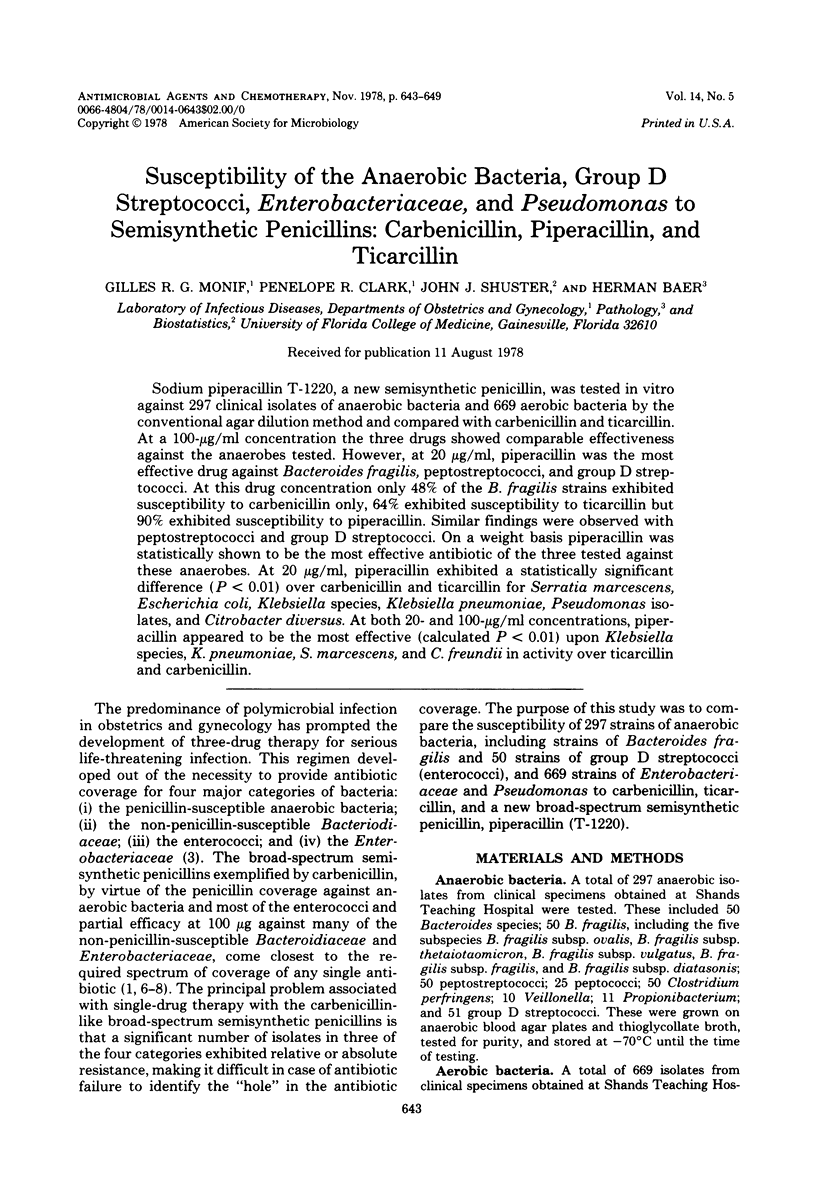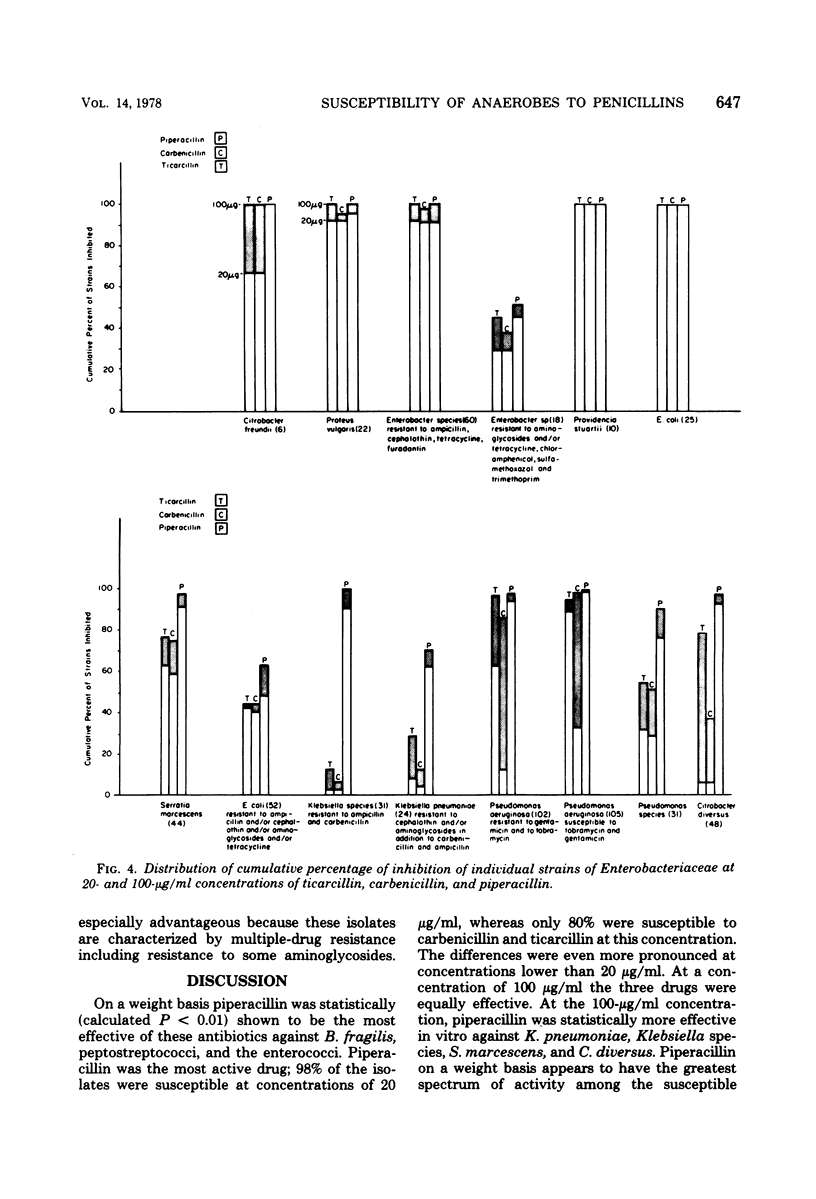Abstract
Sodium piperacillin T-1220, a new semisynthetic penicillin, was tested in vitro against 297 clinical isolates of anaerobic bacteria and 669 aerobic bacteria by the conventional agar dilution method and compared with carbenicillin and ticarcillin. At a 100-μg/ml concentration the three drugs showed comparable effectiveness against the anaerobes tested. However, at 20 μg/ml, piperacillin was the most effective drug against Bacteroides fragilis, peptostreptococci, and group D streptococci. At this drug concentration only 48% of the B. fragilis strains exhibited susceptibility to carbenicillin only, 64% exhibited susceptibility to ticarcillin but 90% exhibited susceptibility to piperacillin. Similar findings were observed with peptostreptococci and group D streptococci. On a weight basis piperacillin was statistically shown to be the most effective antibiotic of the three tested against these anaerobes. At 20 μg/ml, piperacillin exhibited a statistically significant difference (P < 0.01) over carbenicillin and ticarcillin for Serratia marcescens, Escherichia coli, Klebsiella species, Klebsiella pneumoniae, Pseudomonas isolates, and Citrobacter diversus. At both 20- and 100-μg/ml concentrations, piperacillin appeared to be the most effective (calculated P < 0.01) upon Klebsiella species, K. pneumoniae, S. marcescens, and C. freundii in activity over ticarcillin and carbenicillin.
Full text
PDF






Selected References
These references are in PubMed. This may not be the complete list of references from this article.
- Bodey G. P., Rodriguez V., Luce J. K. Carbenicillin therapy of gram-negative bacilli infections. Am J Med Sci. 1969 Jun;257(6):408–414. doi: 10.1097/00000441-196906000-00007. [DOI] [PubMed] [Google Scholar]
- Fu K. P., Neu H. C. Piperacillin, a new penicillin active against many bacteria resistant to other penicillins. Antimicrob Agents Chemother. 1978 Mar;13(3):358–367. doi: 10.1128/aac.13.3.358. [DOI] [PMC free article] [PubMed] [Google Scholar]
- Solberg C. O., Kjellstrand K. M., Matsen J. M. Carbenicillin therapy of severe Pseudomonas aeruginosa infections. J Chronic Dis. 1971 Jun;24(1):19–28. doi: 10.1016/0021-9681(71)90055-5. [DOI] [PubMed] [Google Scholar]
- Swenson R. M., Lorber B. Clindamycin and Carbenicillin in treatment of patients with intraabdominal and female genital tract infections. J Infect Dis. 1977 Mar;135 (Suppl):S40–S45. doi: 10.1093/infdis/135.supplement.s40. [DOI] [PubMed] [Google Scholar]
- Verbist L. In vitro activity of piperacillin, a new semisynthetic penicillin with an unusually broad spectrum of activity. Antimicrob Agents Chemother. 1978 Mar;13(3):349–357. doi: 10.1128/aac.13.3.349. [DOI] [PMC free article] [PubMed] [Google Scholar]


